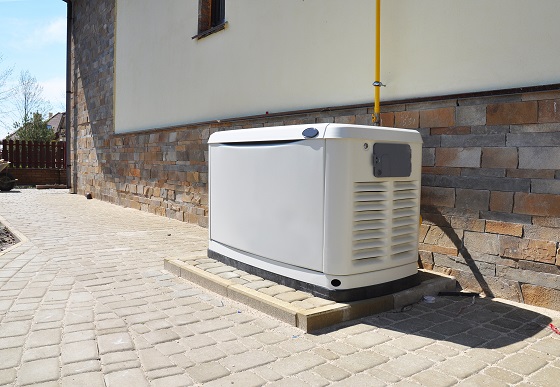 In a cold-weather state you have several items to check off on your annual Fall maintenance list to ensure you and your family get through the Winter months sans problems.
In a cold-weather state you have several items to check off on your annual Fall maintenance list to ensure you and your family get through the Winter months sans problems.
If you’ve been a homeowner for awhile, or you followed your Dad around while he did a similar checklist, you know that being proactive on the outside and inside of your house will help guarantee minimal issues… that is, unless Mother Nature deals a hand like she did for the Winter of 2013-2014.
Check the exterior of your home
You should check the integrity of the bricks and the perimeter of your home to ensure there are no cracks or fissures where water could get in and expand when it turns to ice and wreak havoc with your bricks.
Likewise, ensure that the ground around your home is level and slopes away from the foundation so water does not collect at the base and seep into your basement.
Check seals on all windows and doors and repair any gaps where unwelcome water can seep in and damage windowsills and even walls.
When you clean out your gutters in the Fall after all the leaves have fallen, rinse out the gutters and watch to make sure they are draining properly and there are no split seams or cracks in the drain spouts. The water in the gutters and drain spouts should flow out and drain instantly. If the gutters are clogged, they can quickly fill with slushy water and pull right away or off your home, causing water to seep into your rooms. Likewise, openings in the drain spouts will cause ice to freeze and split them and cause significant damage.
While cleaning your gutters, take a trip to the roof and ensure there are no missing or damaged shingles which could cause snow to melt and cause damage to your roof, roof structure and your home. If you discover damaged shingles, cover the area with a tarpaulin and do the repair yourself or call a roofing contractor ASAP, before water has a chance to work its way under the shingles and into your home.
It is important to turn off the outside taps before the first hard freeze. This will keep your pipes from freezing. If you have outside sprinkler systems, you should ensure that they are properly winterized before the cold weather sets in as well.
When there is alot of snow on the roof, as quickly and safely as possible, remove it so the weight does not damage your roof. Metal roofs are becoming a cold-weather homeowner’s friend because they do not allow snow to adhere, pile up and become problematic… the snow simply slides off the roof and piles up onto the sidewalk where it is easily removed with a shovel or snow blower. An even bigger luxury is owning a heated metal roof.
If you perform this mini checklist each Fall, you can sit in an easy chair and watch the snow fall and feel confident that you’ve done your part to protect the outside of your home.
Inspect and protect
Sometimes the unforeseen happens – a sewer backs up, massive flooding occurs, or even something as simple as a hot water tank that springs a leak or a fiberglass laundry tub that develops a crack as a full load of wash is draining into it will occur.
But, just like outside, you can be proactive inside as well… routine tasks and inspection will thwart any potential water damage and avoid mold and mildew.
In the basement, should you discover a leak, try to determine the source of it as quickly as possible. If there is cracked or defective mortar it should be repaired; if the mortar is not the cause of the leak, check the outside drainage systems.
If you discover moisture in a crawl space, take measures to ensure there is proper ventilation in that area. You might use a fan to dry out the area or use desiccants (available in buckets or in sock-like tubes) which will absorb the moisture. Replace the desiccants as needed.
Consider wrapping pipes with insulated covers to keep them from freezing.
Be diligent about checking windows, walls and pipes for condensation as a result of high humidity in your home. Determine whether there is a leak present, or, perhaps the humidity settings on your furnace or stand-alone humidifier are set at an improper setting. That setting should be regulated daily according to the outside temperature to keep humidity issues at bay. If leaking or damage occurs, try to dry out the area with a fan or by keeping the furnace set high until the area has thoroughly dried out.
Proper air circulation is important to thwart moisture which will encourage the growth of mold and mildew. The primary high-humidity rooms are the bathroom and the kitchen. So you might consider opening a window or using an exhaust fan while showering and doing dishes in those respective rooms.
Water damage and mold
You would think that the wettest seasons would be in the Spring and Summer when rainfall regularly occurs. But, surprisingly, the Winter months are considered the worse times for moisture issues where mold will occur, thrive and quickly become problematic… so problematic, in fact, that you will need to retain the services of a mold inspector in Union who will do a thorough mold inspection, take samples of the mold and determine the course of action, or mold remediation, necessary going forward.
The faster you take care of any mold or mildew issues in your home, the less permanent and costly damage will occur and you will be sparing yourself any health problems as well. Contact an expert who specializes in mold inspection and mold remediation. Mold remediation will help eliminate mold colonies, help prevent future mold infestations, clean any items affected by water damage and apply an odor neutralizer.




